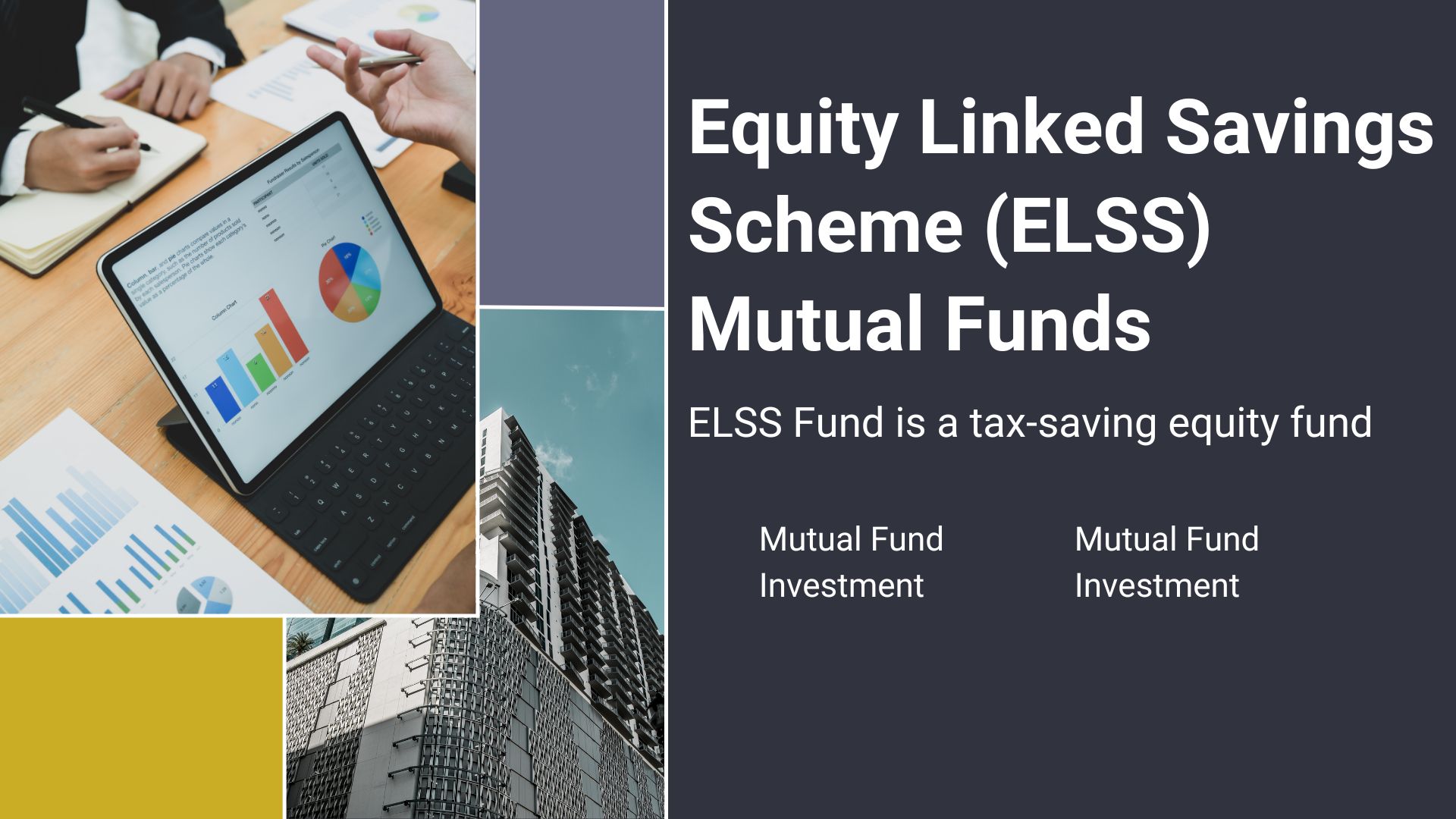Investors are looking for investment opportunities that help them generate wealth, generate regular returns, and save taxes. There are numerous investment plans on the market, most of which offer taxable returns under income tax law. This is where ELSS funds come into play. The Equity Linked Savings Scheme or ELSS Fund is a tax-saving equity fund. Here, we examine ELSS tax-saving investment funds and explain all the aspects you need to know about it.
Table of Contents
- What is ELSS Mutual Fund?
- How does ELSS Mutual Fund works?
- Features of ELSS Mutual Fund
- Are ELSS Funds Tax Free?
- Who should invest in ELSS Mutual Fund?
- Points to consider before investing in ELSS Mutual Fund
- Understanding SIP vs Lumpsum
- What is the advantage of ELSS Funds?
- FAQs
What is ELSS Mutual Fund?
As the name suggests, the Equity Linked Saving Scheme or ELSS is a type of mutual fund that invests primarily in the stock market. Investments of up to 1.5 Lac in ELSS Funds are tax deductible under Section 80C of the Income Tax Code. The advantage of ELSS compared to other tax-saving measures is the short block period of 3 years. This means that you can only sell your investment after 3 years from the date of purchase. However, in order to maximize returns from ELSS funds, we recommend that you hold your investments in place for the maximum possible period of time. If you have an ELSS SIP (Structured Investment Plan), each installment has a 3-year lock-up period. This means that each installment has a different due date.
How does ELSS Mutual Fund works?
The ELSS Fund is a diversified equity fund. A fund that invests mainly in the stocks of listed companies at a certain ratio according to the fund’s investment objectives. Stocks are selected from all market caps (large-cap, mid-cap, small-cap) and industries. These funds aim to maximize capital growth over the long term. A fund manager selects stocks based on thorough market research to achieve optimal risk-adjusted portfolio returns.
Features of ELSS Mutual Fund
- The ELSS Mutual Fund has a three-year lock-up period with no early termination plans.
- ELSS funds are the only tax-efficient investments that can offer returns above inflation.
- They offer a tax credit of up to Rs 1,50,000 per annum under section 80C of the Income Tax Act.
- Investing in ELSS funds gives you the dual benefits of tax deductions and wealth accumulation.
- The fund invests in equities across various market caps, themes, & sectors. Income will be treated as LTCG and taxed in accordance with applicable tax laws.
Are ELSS Funds Tax Free?
As noted above, Section 80C of the Income Tax Act provides tax deduction benefits for capital invested in the ELSS program. This is a cumulative deduction benefit and means you can claim a tax credit of up to Rs. 1.5 lakh under the above section for investing in specified instruments such as ELSS, NSC, PPF, etc. This can save tax up to Rs 46,800 per year.
Additionally, these systems have a mandatory lock-up period of three years. Therefore, when you redeem your shares, you will receive a long-term capital gain or LTCG. These prizes are tax-free up to Rs. 1,00,000 rupees for the financial year. LTCG above this limit is taxed at 10% on profits over Rs. 1,00,000 without index.
Who should invest in ELSS Mutual Fund?
As an Employee: If you are an employee, there is a certain amount that goes into the Employee Provident Fund (EPF), which is a fixed-income product. If you want to balance risk and return in your investment portfolio, ELSS is for you. In addition to the exceptional return benefits, ELSS investments are also Section 80C tax deductible. Unit Linked Insurance Plans (ULIPs) and National Pension Schemes (NPS) do the same, but with longer vesting periods and lower return potential. For example, ULIP has a five-year vesting period. NPS is a post-retirement solution with partial equity exposure, with investments locked up to age 60. ELSS funds have a minimum commitment period of just three years.
As an Individual: If you are a new investor, ELSS is an ideal choice as you get tax benefits plus a taste of equity investments and mutual funds. Yes, investing in equities carries a higher level of risk. But it’s usually short-term. The risk is much lower when investing for 5 years or more. As with all stock investments, we recommend investing in monthly SIPs throughout the year. The ELSS Fund’s SIP helps attract more shares when the market is in the red and helps generate exceptional returns when the market is favorable.
Points to consider before investing in ELSS Mutual Fund
In addition to the factors below, you should check the performance of the program over the last 10 years before investing in an ELSS fund in India.
Investment Period: An investment period of at least three years is required to invest in ELSS funds. The ELSS Fund’s equity exposure requires a longer investment horizon to reduce market volatility.
Returns: Before choosing a fund, compare the fund’s performance against competitors and benchmarks to see if it has a history of consistent performance. When a fund outperforms its benchmarks and peers, it delivers strong returns.
Mandatory Lock-in Period: The ELSS Mutual Fund has its 3-year block period. Your investment is subject to a mandatory block period of 3 years from the date of investment and your holding cannot be redeemed until the end of this period.
Financial Terms & Parameters: You can also analyze your fund’s performance considering multiple parameters such as standard deviation, Sharpe ratio, alpha, and beta. A fund with a high standard deviation and high beta is riskier than a fund with a low deviation and low beta. Choose a fund with a high Sharpe ratio.
Expense Ratio: The expense ratio indicates how much investment is spent on the operation of the fund. A fund’s low expense ratio means it can earn higher returns.
Mutual Fund Manager: The fund manager is another factor to consider as he is the person who plays a key role in managing the fund. A fund manager should be competent and have extensive experience in selecting the right stocks and building strong portfolios.
Track Record: Choose a fund that gives consistent returns over a long period of about 10 years.
Understanding SIP vs Lumpsum
If you don’t want to take the high risk, we recommend investing through SIP. Investing through SIP gives you the opportunity to invest in the fund throughout the economic cycle. As a result, you can profit from buying the Fund’s shares throughout the market cycle. Buy more units when the market is down and fewer units when the market is bullish. Therefore, the price to buy shares of the Fund will average lower over time. This is beneficial in a rising market as higher capital gains can be realized at maturity. This offer is not available when investing principal.
Investment is not recommended unless the market is in a downtrend. Unless you are willing to take higher risks and extend your investment horizon. Missing opportunities to buy shares in the fund through economic cycles need to stay invested for more than 5-7 years to get good returns.
What is the advantage of ELSS Funds?
Higher Returns: Unlike ELSS, whose returns are market-linked, other 80C investments such as PPFs and FDs are fixed-income products. ELSS has the potential to generate significantly higher wealth over the medium to the long-term investment horizon.
Comparatively Shortest Lock-In Period: ELSS has a minimum vesting period of three years. Tax saving time deposit is 5 years and PPF is 15 years. Overall, ELSS will provide more liquidity in the medium term.
Better Tax Returns: ELSS long-term capital gains are tax-free up to a limit of 1 lac. Profits over 1 lac are taxed at a nominal 10% rate. Low tax rates and high rates of return ensure the highest after-tax returns.
Hassle-Free Investing: Through monthly SIP one can easily invest in ELSS funds.
Further Reading: Click on the below link to read relevant articles.
- What is PPF Account?
- What is NPS Scheme?
- Benefits of NPS Scheme
- What are Debits and Credits?
- What is an account?
- Types of Loans in India
FAQs
What is ELSS Mutual Fund Full Form?
ELSS Mutual Fund full form is Equity Linked Saving Schemes Mutual Fund.
What is ELSS Mutual Fund?
ELSS (Equity Linked Savings Schemes) are mutual fund investment plans that help you save on income taxes. Therefore, it is also called a tax-saving fund.
Best ELSS Mutual Fund
Following is some of the best ELSS Mutual Fund:
- Quant Tax Plan
- Kotak Tax Saver Fund
- IDFC Tax Advantage (ELSS) Fund
- PGIM India ELSS Tax Saver Fund
- Mirae Asset Tax Saver Fund
- Canara Robeco Equity Tax Saver Fund
- SBI Long Term Equity Fund
Is ELSS taxable after 3 years?
ELSS funds are tied up for three years, so there is no opportunity to realize short-term capital gains. Therefore, only long-term capital gains can be realized. These profits up to INR 1,00,000 per annum are tax-free and profits above this limit are subject to long-term capital gains tax of 10%.
Is ELSS better than SIP?
ELSS is an investment vehicle, while SIP is not, it is a way to invest not only in ELSS but also in other mutual funds. ELSS is therefore not an Apple-to-Apple comparison and cannot be compared to SIP.
Can I withdraw ELSS after 1 year?
For lump sum investments in ELSS, the lockup period is calculated from the date of purchase. Therefore, ELSS Fund shares can only be sold after three years from the date of investment.
What if I stop ELSS before 3 years?
As previously mentioned, ELSS funds cannot be withdrawn before the 3-year lockup period expires, so early withdrawal options are not available to investors and there are no penalties in this case. Investments in ELSS will be blocked for 3 years. In no event can it be withdrawn before the expiration of three years.


